Ford, Mazda, Volvo all seem to get along

Ford, Mazda and Volvo were closely aligned affiliates for years, but all are doing well on their own.
By John Gilbert
When Ford Motor Company owned Volvo and had a solid percentage of Mazda a decade ago, all three seemed to be thriving, as Ford used those two affiliates in a tight network of platforms and engines that led to some excellent vehicles.
When Ford first brought out the Probe sports coupe, it had a 4-cylinder Mazda engine and a V6 from Ford, and Mazda actually built the car for Ford in Flat Rock, Mich. Later, Ford saw that Mazda was building the Tribute compact SUV, which was exactly what Ford was visualizing, so they collaborated and Ford built both the Tribute for Mazda and the Escape for itself. Mazda supplied Ford with an exceptional 2.0-liter 4-cylinder engine that has evolved into the Ford engine now being turbocharged as the EcoBoost. Ford also brought in the rock-solid Volvo platform to underpin the Edge and the Taurus, and used the same technology for the new Explorer. The very successful European Focus was another example of the global treatment, as Ford equipped its prize compact with the 2.0-liter Mazda engine, and built it on a Volvo S40 platform.
When the economy sputtered, Ford protected its bottom line by divesting itself of its connection to Mazda and ownership of Volvo, and all three went their separate ways. All three continue to build impressive vehicles independently. Ford is doing the best its ever done, making major headlines with its EcoBoost powerplants. Mazda has continued to make breakthrough engines with its new Skyactiv technology. And Volvo has improved its breed, agreeing to be bought by a Chinese holding company that owns Geely, a Chinese car company. All Volvo needs to continue building strong, safe vehicles is financial support, and the Chinese ownership can provide that.
That makes it interesting to take a look at what the three are doing in the midsize SUV market segment, where they used to collaborate.
FORD EXPLORER
The Explorer is generally credited with igniting the move down from the largest SUVs to more maneuverable and more efficient midsize vehicles. Since then, Ford has squeezed the Edge, Flex, and Escape in under the Explorer, so the latest Explorer is larger, as if to bridge the gap from midsize to large.
The Explorer benefits from the EcoBoost plan of using smaller-displacement engines, turbocharg them to reclaim the power of larger alternatives. The enlarged Explorer can range from a 2.0 EcoBoost four, to a 3.5 V6 with 290 horsepower, and all-new for 2013 is the Explorer Sport, a specialty SUV with blacked out grille and lower front fascia, and the 3.5-liter EcoBoost V6.
The Sport 2.0 engine, with twin turbocharging, delivers 350 horsepower and 350 foot-pounds of torque, increasing towing capacity to 5,000 pounds. A 6-speed automatic transmission with steering wheel paddles is well coordinated with Ford’s terrain management system, which seems to be a thinly disguised copy of the system used by Range Rover — another marquee Ford owned but recently sold. Settings for smooth pavement, foul weather, and even off-road terrain are available at the twist of a console knob. The Sport package also has a stiffer suspension with specially tuned steering, and unique 20-inch wheels. Read more
Minnesota heads for wild Wild finish
By John Gilbert
If the Minnesota Wild make the playoffs, they won’t have a game with higher intensity or drama than their 2-1 victory over the defending Stanley Cup champion Los Angeles Kings on Tuesday at Xcel Energy Center in Saint Paul.
A capacity crowd at the X stood and cheered through the final minutes, as Niklas Backstrom and the Wild strained every nerve in the building to hold off the attacking Kings. The Wild got goals from Charlie Coyle and Cal Clutterbuck 13 seconds apart in the first period, and held on against a curious stretch in the second period. Play got particularly intense, with a nasty climax when Dustin Brown KO’d Jason Pomerville of the Wild with a perfectly thrown elbow.
Pomerville caught the flagrant elbow right on the chin, and went down on his back, smacking the back of his helmeted head on the ice. Pomerville got up, stumbled to the bench, and then the dressing room, and didn’t return. Brown didn’t even get a minor penalty, but the play is sure to be reviewed by the NHL, who, if they want to stress cutting down on blows to the head, will have no choice but to hit Brown with a suspension.
The Wild went into the game locked with Columbus at 51 points, in a tie for the final two playoff spots in the West. They played with full intensity for all 60 minutes, and any wavering would have cost them the game. Coach Mike Yeo made a couple of moves, promoting hard-hitting Clutterbuck to the second line, with Matt Cullen and Devin Setoguchi. Coming on right behind the Mikko Koivu-Zach Parise-Charlie Coyle line, that proved to be a 1-2 punch when first Parise went deep on the left and fired a pass out front that Coyle put away, then Clutterbuck, a right-handed shot, dashed in on the left and fired a bullseye into the upper left corner for the 2-0 start.
The finish came down to Backstrom hurling himself across the crease to make the save of the game with 12 seconds left, and the Wild gained two extremely important points. The Wild moved up to 53 points, two up on Columbus, and three up on Detroit. The Kings, hoping to move up from fourth, stayed at 57 points and had to travel to Detroit for a huge game Wednesday night, knowing that St. Louis was only one point behind them, and San Jose two points back.
Without a doubt, the Wild game against the Kings was just like the best playoff game you could see, and suddenly the Friday game against Edmonton doesn’t look so imposing. A Wild victory in that one will clinch a playoff spot.
CRITICS RISE
If a little knowledge is a dangerous thing, how scary is no knowledge? If you read the columnists or listen to the talk-radio guys in the Twin Cities the last couple of weeks, you’d think the Wild is in collapse mode. The Wild went on an impressive tear a month ago, and charged into the midst of the Western Conference’s eight-team playoff picture. That included a victory in Vancouver that I thought might have been the best game I’ve ever watched the Wild play. The next game was in Detroit, and the Wild played at least as well to also beat the Red Wings. That victory over the Red Wings could prove pivotal as the teams head into their final weekend of play, their final two games.
Two weeks ago, the Wild struggled in three home games, against Chicago, St. Louis, and Columbus — three of the league’s best — then went on their last road trip and won convincingly in Calgary and Edmonton, before heading for San Jose where the Sharks feasted. Those media folks who don’t go to hockey games unless their continued absence would embarrass them, ripped the Wild for not doing better in San Jose. One talk-radio guy got his cohort to agree that it was ridiculous to play ace goaltender Niklas Backstrom at both Calgary and Edmonton, where they were assured of winning, because the load might be too taxing for Backstrom
That’s like saying with a half-dozen games to go, the Twins should rest Joe Mauer, or with two weeks to go, the Vikings should sit-out Adrian Peterson. At the risk of submitting a couple of facts serving as evidence, there are no easy games, no sure things, at this stage of the season, and especially a season condensed into a frantic pace by the lockout that eliminated the first half of the season. You play Backstrom at Calgary and at Edmonton because you should win those games, and if you don’t play your best goaltender and lose, the failure to secure those two points might cost you a playoff spot. At Calgary, the Wild roared to a 4-1 lead, and as the fans booed the Flames, they flared to life and rallied for two late goals. Backstrom held on, and the Wild won 4-3. Taking nothing away from the Stars backup goaltending, but a few great late saves by Backstrom proved the merit of him being between the pipes.
The loss at San Jose, yes, that was not the Wild’s finest hour, but it wasn’t a bad night to be off, because the Sharks are good enough to beat you when you’re at your best.
That brought about the current, final homestand, with the Wild playing host to Calgary, Los Angeles, and Edmonton, Friday, before going on the road to face Colorado on Saturday in the finish of the regular season. The race was so tight that winning at Calgary and Edmonton lifted the Wild to third place in the West, but losing at San Jose dropped them quickly, and coming home and losing to Calgary left them tied with Columbus for seventh and eighth places in the West with three games left. The critics hissed about the Wild faltering against Calgary, but they played very well, dominating the first two periods, but couldn’t score after Zach Parise gained a 1-1 tie late in the first period.
The most precarious image was caused by Detroit and Dallas. The Red Wings — still one of the NHL’s elite teams — lurked only one point behind the Wild and Blue Jackets, and the Stars were only two points behind the Wings after winning in San Jose Tuesday night. All had three games left.
That’s why Tuesday night’s victory at Xcel Center over the Los Angeles Kings was so enormous. A loss by the Wild wouldn’t have spelled doom, but it would have allowed Detroit and Dallas to make it a photo finish. And, when you think about it, the Red Wings and the Stars have about a thousand times more tradition and experience about what it takes to make the playoffs than the still-maturing Minnesota Wild.
FORMULA 1 INNOVATION
The Bahrain Grand Prix, fourth in the long and tangled Formula 1 auto racing season, was broadcast at 6:30 a.m. last Sunday by NBC-Sports, a new sports network that swiped the Formula 1 rights from Speedvision. For years, Speedvision has done a magnificent job of presenting the best auto racing series in the world, with Bob Varsha’s deep and familiar voice doing the play-by-play, and David Hobbs, the clever Englishman and former racer himself, doing the color.
NBC-Sports, which wants to be a challenger for ABC’s ESPN stronghold, does a similarly good job with the broadcast, and they kept David Hobbs, but they’ve replaced Bob Varsha with Leigh Duffy. Now, Duffy does a very good job on play-by-play, maybe even as good as Varsha, but he, like Hobbs, is a proper Englishman with a proper English accent. Apparently nobody listened to any auditions by the two together, but when you hear an Englishman’s accent on play-by-play, and pertinent comments by another Englishman’s accent on color, it comes off as entirely too much English accent. The contrasting voices are no longer in contrast, and after four races, I appreciate the job Varsha did for over a decade even more.
As for the race, which was rebroadcast at high noon — a definite improvement from Sportsvision’s dawn-or-else telecasts — it was thoroughly entertaining from start to finish. The impressive 3.4-mile road-racing track is plopped down in the desert of Bahrain, wide enough to allow passing in several areas, and with three high-speed stretches where the F1 guys are all well over 180 miles per hour. I can’t recall seeing as much passing and side-by-side racing in a Formula 1 race.
Sebastian Vettel, the youthful German driver for Red Bull, won his fourth race in a row, but it was not without high drama. After Lotus driver Nico Rosburg surprised everyone and won the pole, he had a good start and cut across Vettel’s bow before Turn 1, allowing Fernando Alonso to also squeeze by for second in his red Ferrari. For three laps or so, the three shuffled positions in a breathtaking skirmish, before Vettel got ahead, then opened a small gap.
The fact he was able to maintain it throughout the rest of the 57-lap sprint around was a proper show of strength, but the dicing behind him was ferocious, and the cameras did an excellent job of capturing duels between the rest. After 18 laps, Vettel led and Red Bull teammate Mark Webber was second, but then it got crazy. Paul di Resta of Force India had his best race and contended up front most of the way before settling for fourth. Alonso had the flap that opens on the high rear wing stuck open, and he had to pit to have it sealed shut, and much as he struggled to stay with the leaders, he ultimately finished eighth.
One of the highlights of the race was that 50 percent of the commercials were done on a split-screen arrangement, where one-third of the screen stayed on the race leaders, while two-thirds flashed ads for Blackberry, Mobil 1, promotions for upcoming NHL broadcasts, Husqvarna, Mercedes, T-Mobile, Infiniti cars, CanAm ATVs, Rolex watches, Bridgestone tires, Evinrude outboards, Tire Rack, Mother’s car polish, Citi, and GoPro cameras. I can’t remember who ran the other ads, because when they interrupted the race, I dashed to the kitchen for more coffee. The no-interrupt idea is a good one, although a 50-50 split would be even more impressive, or an inset into the full-screen broadcast. And it’s something that sports like hockey should adopt, because it would be far better than the minute or two breaks that interrupt anything resembling rhythm.
With 10 laps remaining in the race, Kimi Raikonen, in the No. 1 Lotus, had gained second, trailing Vettel by about 11 seconds, while di Resta had all he could do to hold off Romain Grosjean, in the second Lotus for third. Close behind those two, Webber and Mercedes driver Lewis Hamilton were battling for fifth. With five laps to go, Grosjean squeezed past di Resta for third just about the time Webber repassed Hamilton for fifth. Sergio Perez, in the second McLaren, had a bumping battle with teammate Jensen Button, then got by him, and remarkably passed Alonso. With two laps left, Hamilton and Webber were side-by-side through several turns, in one of the race’s top moments, and Hamilton edged ahead on the final lap to take fifth. Webber sagged just a bit after Hamilton passed him, and Perez also snuck by Webber just before the finish.
That left the finishing order: 1. Vettel; 2. Raikkonen; 3. Grosjean; 4. di Resta; 5. Hamilton; 6. Perez; 7. Webber; 8. Alonso; 9. Rosburg; and 10. Button. All 10 had their moments in contention in the race, something that rarely, if ever, has happened in Formula 1 in the last two decades. Vettel, on the podium for Red Bull with Lotus teammates Raikkonen and Grosjean joining him, made the comment on how it was a big day for Renault engineering as well, since the top three finishers all were powered by Renault engines.
Actually, it was a big day for Formula 1, because it proved the series can be more than a chess-match of manipulating tire compounds or trading 3-second pit stops. Wheel-to-wheel racing is the best, and when you see the world’s best drivers in the world’s best cars, on the world’s best road courses racing that way, it’s a solid 2 hours of entertainment.
Gophers repeat as women’s champ at 41-0
By John Gilbert
MINNEAPOLIS, MINN. — Minnesota finished a women’s hockey season that coach Brad Frost said was surreal. Not just surreal, but “very surreal.” The Golden Gophers put down a very dangerous Boston University outfit 6-3 Sunday afternoon before a sellout crowd of 3,400 at Ridder Arena to win their second NCAA championship in a row, and to complete the first undefeated, untied season in women’s college hockey history.
So dominant was Minnesota all season that the debate has already started about whether this is the greatest women’s team ever, and that’s one that could go into the night with valid points in favor, and with some about how much more competitive the top teams in the WCHA were a decade ago when Minnesota, Minnesota-Duluth, and Wisconsin beat each other up. But nobody can argue with that one fact: a 41-0 record will go into the books as a record that won’t ever be broken, and is extremely unlikely to even approach being duplicated.
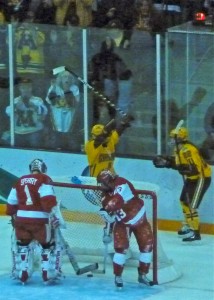
Minnesota's Amanda Kessel, left, set up Hannah Brandt's 33rd goal for a 2-0 lead, and the two celebrated.
“You just saw a record-breaking team play another great team,” said Boston University coach Brian Durocher, whose team finished 28-6-3. “Nobody’s ever gone 41-0 before, and I tip my cap to them for what they’ve accomplished. But I was proud of our team too. The shot count didn’t get away, and the territorial didn’t get away. I love everything about our team. They were down 2-0, 3-1, 4-1, and they never quit. They fight to the end.”
One of the reasons the Terriers were dangerous to the end was that the Gophers had actually looked beatable in their two previous games — a 3-2 triple-overtime marathon in the NCAA quarterfinals against North Dakota, a team they had shut out 2-0 in the WCHA Final Faceoff final the week before, and a quite similar 3-2 overtime victory over Boston College in Friday’s NCAA semifinals.
But the Gophers lived up to the motto Frost had presented them with for this season, and left no doubt in the title game, scoring twice in every period.
“Last year, our motto was ‘Prove it,’ and this year, it was ‘Leave no doubt,’ ” said Frost. “On Day 1, I told the team we had to focus on the process, the things we had to do to win. I told them we’re going to lose a game here and there, but let’s focus on the process. And here we are, 41 games later. It’s incredible.
Captain Megan Bozek said: “I don’t think we focused on being unbeaten. You guys in the media ask us about it all the time, so we have to think about it. But I don’t think it ever got to be something that bothered us.”
Frost, however, said later that he thought the undefeated streak did have an effect. “I think it started to weigh on them once we got to the one-and-done playoffs,” he said. “But tonight, we played free.”
And, they left no doubt.
It took a power play to get Minnesota untracked midway through the first period for a Mira Jaluso goal, then Hannah Brandt scored her 33rd goal of an amazing freshman season, short-handed, at 18:32 for a 2-0 lead.
The Gophers followed up on that formula, scoring twice in every period, with Patty Kazmaier Award winner Amanda Kessel getting her 45th goal late in the second and Milica McMillen connecting two and a half minutes later. In the third, defenseman Rachel Ramsey scored, and Kessel finished off the offense with a colorful empty-net goal in the final minute for No. 46.
Kessel, goaltender Noora Raty, and captain and defenseman Bozek shared the post-game interview podium with Frost. Those three were the three finalists in the Kazmaier competition for best women’s college hockey player in the country.
“I don’t know if you can draw up a better scenario,” Frost said. “To go 41-0, and have the three best players in the country on this team, it’s something I can’t even put into words.”
Despite the steady offense, the Gophers were never completely clear of the hustling and well-prepared Terriers. After Brandt’s short-handed goal, BU came back 16 seconds later, still on the power play, for a goal by Sarah Lefort, who pulled a rebound clear and backhanded it past tournament most outstanding player, Noora Raty, in the Minnesota goal, cutting it to 2-1.
And, trailing 4-1 after two, Boston University’s spectacular junior center Marie-Philip Poulin scored with a 40-foot one-timer blast from the slot at 1:48 of the third period to lift the Terriers within 4-2.

The Gophers skated over to their band's section to share their second straight NCAA women's championship trophy.
“The key in the game was to get the lead,” said Kessel. “But it was never safe. When we were ahead 4-2 in the third period, Poulin walks in and Noora made a great save. It could have been 4-3, but instead we went down and made it 5-2.”
That was when Ramsey scored on a tap-in at the crease with 4:33 remaining. Even at 5-2, however, the persistent Terriers came back again to make it 5-3 with 2:52 left — 6 seconds after a Minnesota time out.
“I called time because our line had been out there too long, so I wanted to get fresh legs out there,” said Frost. “I called time out, they pulled their goalie and scored on the next shift.”
Within two again, which puts a team in striking distance, made the last three minutes more important, and it also made Kessel’s empty-net goal with 49 seconds remaining the first moment the Gophers themselves were assured there was, in a phrase, no doubt.
Badgers hold off CC 3-2 in final Final Five final
By John Gilbert
SAINT PAUL, MINN. — Wisconsin goaltender Joel Rumpel’s nickname is “Sunshine,” which might imply that linemates Tyler Barnes and Nic Kerdiles could be called the moon and the stars. Collectively, they sent the Badgers into NCAA tournament orbit with a 3-2 victory over Colorado College Saturday night that provided an out-of-this-world reward of the Broadmoor Cup as well.
The two teams were not only playing for the final Red Baron WCHA Final Five championship, before 18,782 fans at Xcel Energy Center — Wisconsin is heading for the Big Ten Conference next season, and CC to the new National Collegiate Hockey Conference — but the loser would fall from the scope of the 16-team national tournament field of candidates. After all that the Badgers have endured this season, all it took was some more of that patented execution, some Rumpel sunshine in goal, and another dose of what seems to be their private stock of karma.
Barnes scored the pivotal first goal of the game to stake the Badgers to a 1-0 lead in the closing seconds of the first period. Sean Little’s tip made it 2-0 to open the second, and trying to come back against the stifling defensive style that coach Mike Eaves has convinced his player of using is a lot like running in quicksand.
Outshot 33-22, including 9-4 in the third period, Colorado College did battle back, behind the amazing dynamo named Rylan Schwartz, who set up Charlie Taft for a flashy goal to cut the margin to 2-1, and scored an impressive breakaway goal to end the second period and close the gap to a workable 3-2.
The third Badger goal gave Wisconsin a 3-1 edge when Kerdiles went to the right edge of the net and smacked in the rebound of a shot by goal-crashing John Ramage. That meant that despite the presence of the ever-dangerous Schwartz, the 3-2 lead was in good with Rumpel in goal.
“We were tired, our D-corps was tired,” acknowledged CC coach Scott Owens. “And this game was a different style. Wisconsin is so dialed in to their defensive system, and they execute it so tightly, we were always a step behind. But I’m very, very proud of our guys. This was our eighth straight road game. But we had a strong will to keep it going. Rylan Schwartz was an absolute man out there, making big-time plays at big moments.”
The way the Badgers are playing now makes the beginning of the season seem distant. During that dismal 1-7-2 start, junior Tyler Barnes couldn’t seem to buy a goal, and freshman Nic Kerdiles was unable to play, ruled ineligible for allowing a pro agent to get too close to him during the NHL draft. As the season moved on, Kerdiles found a home on the Badgers first line, with Mark Zengerle centering him on the left and Barnes on the right. “Their chemistry has caught on,” said Eaves.
That chemistry has been apparent through the playoffs. The Badgers swept Minnesota-Duluth 3-1 and 4-1, with Kerdiles and Zengerle scoring goals in the first game and Barnes getting one in the second. Then came the Final Five, and Barnes scored twice and Kerdiles once in the 7-2 shocker against Minnesota State-Mankato, and Kerdiles and Barnes each scoring a goal in the 4-1 semifinal victory over St. Cloud State. With each getting a goal in Saturday’s final, it means Barnes and Kerdiles have combined for nine goals in five playoff games.
Kerdiles was voted most valuable player of the Final Five, and joined Barnes and CC star Schwartz as the all-tournament forwards. John Ramage of the Badgers and Peter Stoykewych of the Tigers were the defensemen, and Rumpel of the Badgers the goalie.
“Joel’s nickname is Sunshine,” said Eaves. “He’s got the perfect goaltender attitude because he remains calm when people are flying all around him. He makes things look easier than they are because of his demeanor.”
The Badgers are in the midst of a surge from a faltering 1-7-2 start to a 22-12-7 record, and a certain spot in the 16-team NCAA tournament field that will be announced Sunday. Colorado College, which showed such great tenacity in stringing together four consecutive upset victories, finishes 18-19-5, knowing that only a championship and its automatic berth could push the Tigers to the NCAA field.
The fresher Badgers gained a touigh 1-0 lead in the final minute of the first period, and made it 2-0 early in the second, staying ahead at 3-1. But Rylan Schwartz, CC’s version of Superman to the Tigers offense, set up one goal and scored the other to close the gap by the end of the second period. His presence meant that CC was a threat to tie the game until the closing seconds.
The safest assumption was that the title match would be a goaltending duel between Rumpel and CC’s Joe Howe. Rumpel had allowed three goals in his victories over MSU-Mankato and St. Cloud State, while making 68 saves, a save percentage of .957; Colorado College’s Howe had allowed three goals in beating North Dakota in overtime and blanking Minnesota, and made 64 saves, a percentage of .955.
The first period was just such a duel, as both goalies were solid. The Badgers outshot CC 13-9, and it was the 13th shot that gave the Badgers a 1-0 lead. Frankie Simonelli shot from the left point, and Kerdiles deflected it on net. Howe blocked it, but the rebound landed in the left side of the crease, and Tyler Barnes smacked it in, with 17 seconds remaining in the first period.
“It could have been a different game if we didn’t score first,” said Eaves. “Congratulations to CC. They had a lot of heart and soul, and they put all of it out there.”
Both teams had plenty of reason to plead exhaustion, with the title game being their third in three days. For Colorado College it was worse, because they had to go all three games to upset Denver the previous weekend, which meant Saturday’s final was the Tigers sixth game in nine days. And the Tigers did seem to sputter a bit in the second period.
The Badgers had something to do with that, of course, deflating the CC hopes when Jake McCabe’s point shot was deflected by Sean Little past Howe for a 2-0 lead at 3:28.
Colorado College gained a little spark at 7:19, when Schwartz rushed up the left side to create a 2-on-1, and sent a perfect goal-mouth pass to Charlie Taft, who banked it in at the right edge to cut the Wisconsin lead to 2-1.
The Tigers dodged a bullet when a Wisconsin power-play goal was disallowed midway through the period, because the rebound of Ryan Little’s wide-angle shotpopped up off the goalie’s mask and, video reviews proved, brother Sean Little batted it in with his gloved left hand at about waist height.
But at 16:15, Wisconsin scored a legitimate third goal. John Ramage rushed up the right boards from the point, curled deep and veered out in front. Howe blocked his backhander, but Nic Kerdiles rapped in the rebound at the right post for a 3-1 lead.
That appeared to settle Colorado College’s hopes of going all the way to the Final Five title — the Tigers only hope of reaching the NCAA tournament’s 16 selections. The Tigers passes lacked crispness, and accuracy, and the second period was wearing down into its final minute.
But then, Schwartz to the rescue again. Alexander Krushelnyski picked the puck off the left boards in his own end and spotted Schwartz trying to break past defenseman McCabe. Krushelnyski quickly zipped a pass up the middle, and Schwartz broke in, fighting off repeated hooking attempts by McCabe, then making a great deke before firing a shot past Rumpel with 27 seconds left in the middle period.
Exhaustion seemed to be a secondary foe for the Tigers in the third period, but as the final period wore on, exhaustion seemed to be getting the upper hand.
Owens pulled Howe for an extra attacker with 1:10 remaining, and as the Tigers rallied furiously, CC’s William Rapuzzi was called for tripping with 9.4 seconds remaining, and the last gasp was extinguished.
Audi S4, S5 use quattro to blow by winter
By John Gilbert
Twice this winter, my driveway has been graced by three new cars for appraisal during specific weeks, and on both of those weeks my Great White North region of Minnesota became truly white with traffic-clogging blizzards on the North Shore of Lake Superior. On both of those weeks, Audi models have been the reluctant stars.
First, I had two impressive new sedans, plus an Audi S4 quattro S-tronic sedan. Now, Audi makes a very fine A4 sedan, the company’s bread and butter vehicle that bridges the gap from compact to midsize. It drives well, handles well, and gets good fuel economy. Audi also makes an “S” model of the A4, called the S4, which gets all sorts of high-performance upgrades — engine, transmission, suspension, brakes, interior, exterior, virtually everything.
Why, I thought, did they send me a sporty sedan built for high-performance in the middle of winter? For the first three days of the week, I hopped back and forth between the other two, both new front-wheel-drive sedans. And then we got hit with an 8-inch blizzard. The two front-wheel drivers were OK, but they did spend an inordinate amount of their drive time spinning for traction and chattering the traction-control indicator instead of filling me with confidence that we were going to go straight up that hill.
So I ambled over to the snow-covered S4. Knowing it has quattro, which is a traditional all-wheel drive system that Audi created, improved, and has pretty well perfected by now. Audi, by the way, insists that “quattro” be spelled with a lower-case “q” — which I insert here just so readers of car magazines who see quattro always capitalized will appreciate how arrogance can supersede proper spelling. At any rate, I knew the quattro system would scratch and claw, even though the S4 comes with low-profile, high-performance handling tires. When I looked, however, those neat Audi wheels were shod with Bridgestone Blilzzak low-profile winter tires.
For the rest of the week, I left the two all-new FWD sedans parked and cavorted over, through, uphill and around snowdrifts, plowed piles, and icy streets in the Audi S4 quattro. Blizzaks are among the very best winter tires available, because they grip the ground, even on ice, and enhance your ability to get through the worst storms without any of those white-knuckle moments where you’re not sure you’re going to have traction the next time the tires go around. The original Blizzaks did a great job on ice, but decomposed quickly when you drove on normal wet or dry pavement. It was important to take them off and mount summer tires and save the Blizzaks for the next winter. Read more



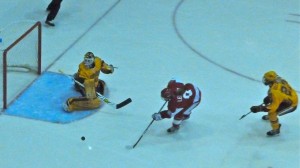
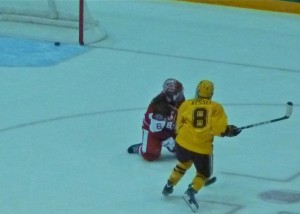
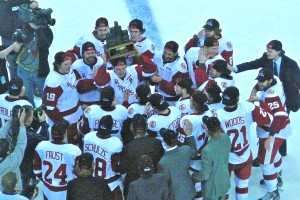
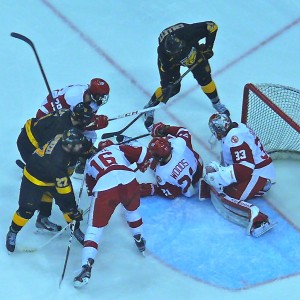
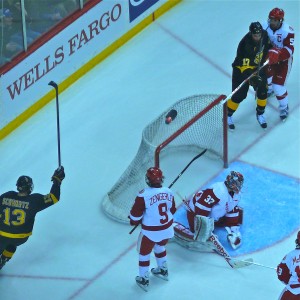
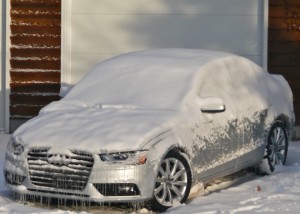
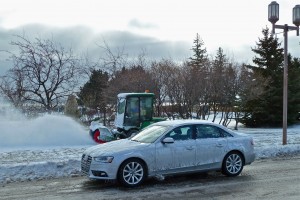
 John Gilbert is a lifetime Minnesotan and career journalist, specializing in cars and sports during and since spending 30 years at the Minneapolis Tribune, now the Star Tribune. More recently, he has continued translating the high-tech world of autos and sharing his passionate insights as a freelance writer/photographer/broadcaster. A member of the prestigious North American Car and Truck of the Year jury since 1993. John can be heard Monday-Friday from 9-11am on 610 KDAL(www.kdal610.com) on the "John Gilbert Show," and writes a column in the Duluth Reader.
John Gilbert is a lifetime Minnesotan and career journalist, specializing in cars and sports during and since spending 30 years at the Minneapolis Tribune, now the Star Tribune. More recently, he has continued translating the high-tech world of autos and sharing his passionate insights as a freelance writer/photographer/broadcaster. A member of the prestigious North American Car and Truck of the Year jury since 1993. John can be heard Monday-Friday from 9-11am on 610 KDAL(www.kdal610.com) on the "John Gilbert Show," and writes a column in the Duluth Reader.